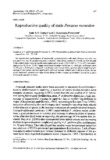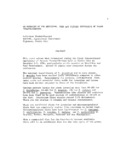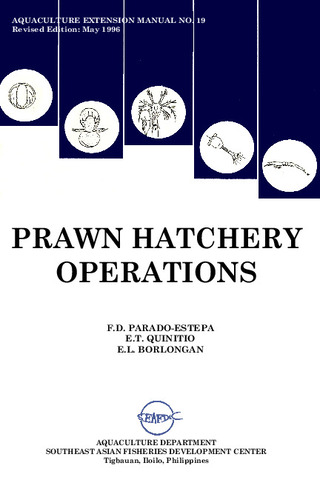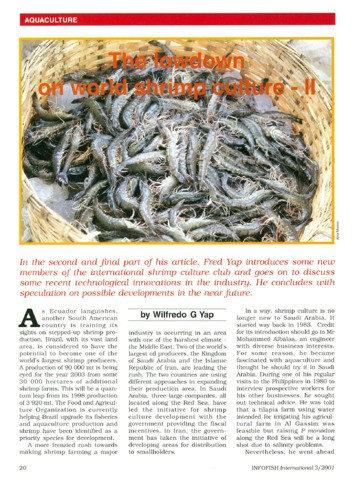Reproductive quality of male Penaeus monodon

View/Open
Date
1993Page views
433Metadata
Show full item recordCited times in Scopus
- Citations
- CrossRef - Citation Indexes: 14
- Scopus - Citation Indexes: 23
- Captures
- Mendeley - Readers: 38
Share
Abstract
The reproductive performance of unilaterally eyestalk-ablated wild male Penaeus monodon was compared with that of unablated prawns (controls). After being stocked for 6 weeks in flow-through tanks, ablated males showed significantly higher sperm count (153.6 × 106 vs.77.5 × 106), less abnormal sperm (45.5% vs 73.3%), larger sperm head diameter (6.682 μm vs. 5.568 μm) and longer spike (5.096 μm vs. 4.360 μm) compared to unablated ones. Gonad index, spermatophore weight and percentage of live sperm were not significantly different between ablated and unablated males. No apparent decline in reproductive capacity was detected when comparing unablated prawns at the start of the study and after 6 weeks.
Suggested Citation
Gomes, L. A. O., & Honculada-Primavera, J. (1993). Reproductive quality of male Penaeus monodon. Aquaculture , 112(2-3), 157-164. https://doi.org/10.1016/0044-8486(93)90441-Z
Subject
Taxonomic term
Collections
- AQD Journal Articles [1248]
Related items
Showing items related by title, author, creator and subject.
-
An overview of the nutrition, feed and feeding techniques of prawn penaeid/shrimps
Piedad-Pascual, Felicitas (Philippine Council for Aquatic and Marine Research and Development, 1989)This paper echoes what transpired during the first International Conference of Penaeid Prawns/Shrimps held in Iloilo City in December 4-7, 1984, particularly on the Nutrition nd Feed Development. Around 25 papers were ... -
Prawn hatchery operations
Parado-Estepa, Fe D.; Quinitio, Emilia T.; Borlongan, Emeterio L. (Aquaculture Department, Southeast Asian Fisheries Development Center, 1996-05)The manual, an updated version of the 1984 SEAFDEC/AQD manual, presents the underlying principles and step-by-step instructions of prawn larval and post-larval rearing. The techniques described are not only applicable to ... -
The lowdown on world shrimp culture - II
Yap, Wilfredo G. (INFOFISH, 2001)This paper introduces some new members of the international shrimp culture club and goes on to discuss some recent technological innovations in the industry, particularly the polyculture of tilapia (mainly Oreochromis ...




